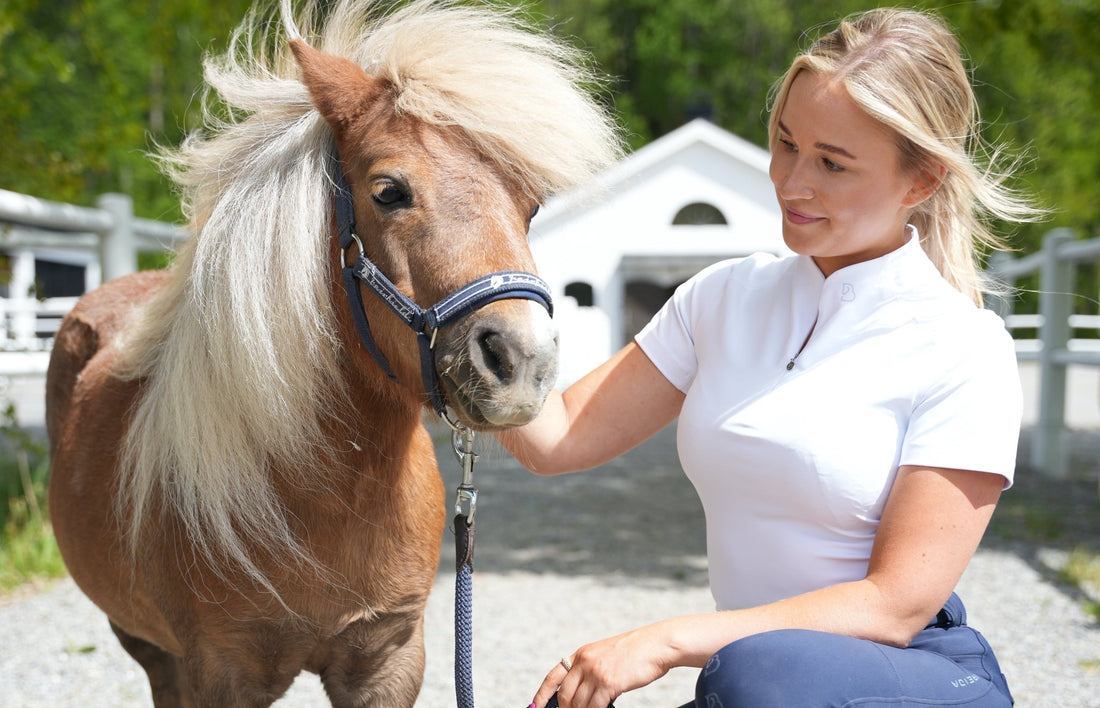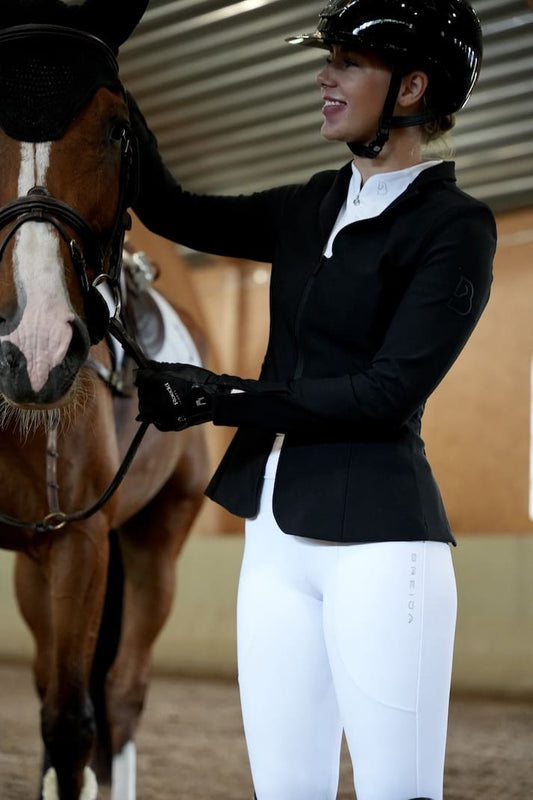The choice of fabric is just as important as the design to achieve maximum comfort and to make the product as suitable for the use as possible.
Breeches
When we designed our breeches, a big focus was the choice of fabric. What we wanted to achieve with our riding breeches was to create unbeatable comfort and fit, and the choice of fabric then became central. A thicker fabric is required to provide support in the breeches, while a too thick fabric means that the breeches are not flexible and stretchy. We believe that we have found just the perfect combination between these two components. The fabric in our riding breeches is significantly thicker than regular riding leggings, which provides good support when you ride and means that you do not slide around in the breeches but sit firmly in the saddle. At the same time, the fabric is so stretchy that you are not restricted in your movement.

The fact that the fabric has good stretch means that the breeches stays up in the waist without sliding down and even if there are loops for belts, that is nothing that should be required to keep the breeches in place. We have received a lot of positive feedback about the breeches in particular, and many customers think that the fit is very good and that the breeches keep their shape, which is a combination of the choice of ma and the design.
The material for our riding breeches is a combination between Polyester and Spandex, which is common for sports clothing as that type of material is durable, stretchy, dries quickly, and feels soft and supple against the skin as well as being water and dirt repellent.
To take care of your clothes in the best way so that they last as long as possible, our first recommendation is not to wash unnecessarily. As the material is dirt resistant, they can be brushed / shaken off and then hung to air out between uses. When you are going to machine wash, we recommend turning the clothes inside out, alternatively use a laundry bag, this will save it a lot of wear and tear from the washing machine and get the inside as clean as possible. Do not wash at a high temperature, we recommend 30 degrees, which is also energy-saving and better for the environment. Do not use bleach or fabric softener, this as bleach does not work on polyester as that type of fabric is dyed with a different process and bleach can give the fabric a yellowish or grayish color. Fabric softener should not be used for functional garments as it can destroy the elasticity of the fibers and thereby impair the garment's properties.
Saddle pad
In the same way, the choice of material was the basis during the development of our saddle pad. The lining of our saddle pad, the side that rests against the horse's back, is made of undyed and unbleached cotton. Why we chose cotton in particular is due to the fine properties that the material has. Cotton is a natural material that is soft and has good breathability and transports moisture away effectively. When the horse is trained, it often becomes warm and moist from sweat under the saddle pad, and materials such as polyester with completely different properties than cotton can cause chafing and the moisture to be trapped.

We have chosen to neither bleach nor dye the cotton fabric in order to partly reduce the risk of allergic reactions on the horse's back, which can be detected in the form of dots / bubbles, partly to make visible the dirt in the form of sweat and hair from the horse that collects on the underside of the saddle pad as they can also give rise to chafing and rashes. The outside of the saddle pad is in a different material as we are looking for other properties there. It is a blend of cotton and polyester to create a durable material that is water and dirt resistant.
In order to achieve the best results for our saddle pads, partly considering the horse's comfort and partly considering durability and function, we have chosen to combine two different materials. Cotton on the inside to achieve important advantages that these material bring and polyester on the outside to get the advantages that these materials have.
To take the best care of your saddle pad, hang the saddle pad after each training so that it can be aired dry. If necessary, you can rinse the inside of the saddle pad with lukewarm water so that sweat disappears and then dry it hanging. When you machine wash the saddle pad, start by turning it inside out, partly because it is the inside that is usually the most dirty with the horse's sweat and partly to protect the outside from wear and tear in the washing machine so that the saddle pad stay nice for as long as possible. It is important not to wash at more than 30 degrees and without bleach and fabric softener. Do not use tumble dryer, dry it hanging. If the saddle pad has got a stain, you need to remove it before machine washing, use, for example, stain remover spray or bile soap.





